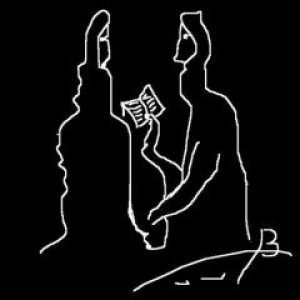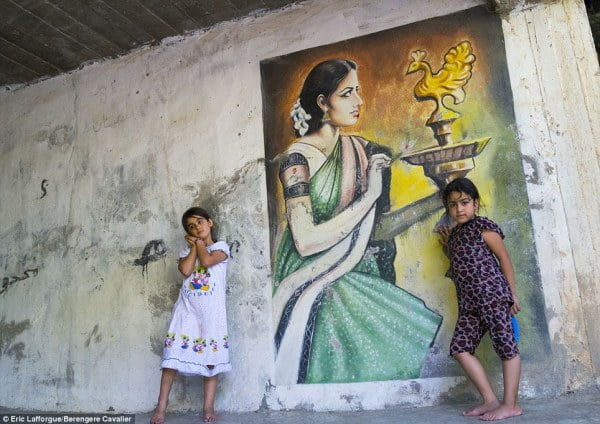If you happen to keep track of the seemingly never-ending Middle Eastern conflicts, you may find this post interesting. Evidently, there are no winners, only losers. However, if you were to assess who lost the most, that would be the Yazidis and Kurds communities. They are perpetually at the receiving end of the wars that have been running for decades now. Their men get killed, and women get sold. Very unfortunate, indeed, and I hope this conflict ends soon and the desert will settle the score eventually.
The term Kurd was not unfamiliar before this conflict; however, at the time, Yazidis did not ring a bell to many. Only after targeted persecution did the scholars and academics scramble to research every bit of information that they could find. This also means that the mainstream media and their collective knowledge on this topic are less than a decade old.
I was going through a few of the documentaries on Yezidism and Yazidis in general. The first thing that came to my mind was this community seemed to have been trapped at that location in a time capsule. If you evaluate their culture and practices, it is evident that they obviously do not belong to that region. Whatever the little assimilation to local culture seems to have been achieved with the only purpose of living in harmony. This obviously never worked and has been proven from time to time.
Remember the Kalash tribe we spoke about?
The academics’ conclusions seemed hurried in the available documentaries and were taken based on the surface information available to them. They unimaginatively concluded without attending to outliers or information, which are many. Of course, I did not do as much research as those. But It does not require rocket science to see the pattern amongst linguistic and geological evidence, which nearly conclusively places them where they are currently present. Even then, a few things do not add up, and I am shocked to find no mention of these facts in any documentaries.
Okay, this is a list of topics related to Yazidi cultures with the first look at documentaries. I hope some of those academics stumble upon my post and consider answering these strange correlations.
Religious Beliefs
- It’s an oral, documented and transferred religion. Yazidis pass on their myths through inheritance. There is no centralized text. Just like Vedic texts, they were propagated through inheritance.
- They have angels called Heft Sur. A basic understanding of Persian and Sanskrit can translate what it is – seven gods. Hefte is a Persian word with Sanskrit origin of Sapta for seven. During ancient ages, Indians called their gods Sur and demons Asurs. Exactly then, understandably, Persians called Gods as Asur’s and monsters as Sur. If you were asked to put a straightforward logical conclusion, where would you put Yazidis?
- They believe in seven angels, the most important being Melek Tawus, a peacock. Here is an interesting trivia for you. Peacocks never existed in the Kurdish region. If you need to find one, you need to travel east till you reach… You guessed it right! Indian subcontinent.
- Emanations, I.e., God, emanates as 7 transcended angels (haft Sur), which sounds very similar to avatars. This is a remarkably similar concept to that of neighbouring Zoroastrianism.
- Reincarnation is based on karma in the current incarnation.
Architecture and artefacts
- The template towers mysteriously resemble conical shapes.
- Snakes guard the temple entrance.
- The peacock lamp looks like the one Samay used in Indian traditions.
Practices
- They do not allow themselves to marry outside the religion or, most importantly, into it. It’s forbidden to convert out or in.
- Prayers are directed towards the sun. Sunrise. And sunset aligning the Sandhya Vandana.
- Castes. Marriage must be within the same group.
- Use of fire in religious practices, including an Aarti.
- Practice tilak/bindi between the brow and the forehead.
- Salute with folded hands.
The list goes on and on.
Let me know what you think.



A Response to moderntoraleadership@wordpres, written by Rabbi Aryeh Klapper and titled: Yavneh and Yericho: A Tale of Two Cities.
I must admit that upon seeing this title, that it reminded me of Charles Dickens 1859 historical novel: “A Tale of Two Cities”. The story reflects the abysmal situation which confronted the poor who lived on the streets of London.
“It was the best of times, it was the worst of times, it was the age of wisdom, it was the age of foolishness, it was the epoch of belief, it was the epoch of incredulity, it was the season of Light, it was the season of Darkness, it was the spring of hope, it was the winter of despair, we had everything before us, we had nothing before us, we were all going direct to Heaven, we were all going direct the other way—in short, the period was so far like the present period, that some of its noisiest authorities insisted on its being received, for good or for evil, in the superlative degree of comparison only. (Charles Dickens, A Tale of Two Cities, Book the First, Chapter I). The historic shadows which set the times of Dickens story: the French Revolution and the Reign of Terror.
Rabbi Klapper opens with: Rabbi Norman Lamm z”l liked to say that “Halakhah is a floor, not a ceiling”. The problem with this rhetoric thesis statement, the term “Halakhah” has two opposing definitions. His thesis assumes that only one definition for this key term, his hair upon which he hangs his mountain. False. The prevailing definition for ‘Halakhah’, derives from the Mishna Torah halachic schism. The Rambam, the Baali Turim, and the Shulchan Aruch based their definition of Halakhah on the trodden path with the Rambam’s code of law established.
The Talmud however does not exist as a code of law. Rather Talmud establishes the common law, Case/Rule style established by Rabbi’s Mishna as the basis for the Gemara commentary on the Mishna. Common law, shares no likeness what so ever with ritual codes of religious practical observances, which the Rambam styled as “halakhah” as opposed to the B’hag, Rif, Rosh codes of “halacha” which did not divorce their simplification of rabbinic disputes of the Gemara’s commentary to any given Mishna, from its Aggadic mussar/p’shat marriage partner, which the editors of the Sha’s Bavli wove together with halacha making the fabric of Jewish legal jurisprudence known as the Talmud. The rabbis within the pages of the Talmud lived their lives as talmidim of Rabbi Akiva; his kabbala known as פרדס. The Rambam did not follow the פרדס logic system by which Rabbi Akiva understood as the definition of Torah Sh’Baal Peh. Rather assimilated Rambam’s code of halakhah, it extinguished the lights of Hanukkah. That tuma code of halakhah exclusively relied upon the logic of Aristotle rather than the logic of פרדס, which defines the Torah Sh’Baal Peh according to the פרדס kabbala taught by Rabbi Akiva and all the other rabbis located in the pages of the Sha’s Bavli.
The false idea that halakhah contains the entirety of Jewish and human obligation, clearly ignores the T’NaCH, Aggadita, Midrashim scholarship. Have personally read a peer contemporary who defended the Rambam’s code of ritual observances by saying that Aggaditah came after the teachings of Halakhah! That person continually denounced me personally by referring to me as an atheist. [https://www.debate.org/debates/why-did-the-Baali-Tosafot-put-the-Rambam-into-Charem/1/].
Rabbi Klapper, brings an excellent observation attributed to the Ramban: “Ramban wrote that Halakhah is not a solid floor. Because a legal system cannot account for all the details of life, one can be a naval birshut haTorah, a disgusting person acting under the authority of Halakhah, and fall through into spiritual cellars or dungeons.” Mussar defines the term “prophet”. A prophet commands mussar. Mussar has the definition – the achievement, for even a short moment, the revelation of the finger of HaShem within our lives. The most recent conflict with Gaza, where Hamas fired some 4,400 missiles at Israel, the amazingly low number of hurt, maimed, or killed in Israel – not the finger of HaShem within our lives! Yet who acknowledges such an awareness? Par’o sent his army to pursue Israel into the Sea of Suf, after he buried all the first born in Egypt.
Mussar stands as the polar opposite of beliefs, creeds, theologies, and dogmatism. A member of the chosen Cohen nation does not “believe” that our fore fathers swore oath whereby they cut the brit faith. Brit does not mean covenant. To swear a Torah oath requires the understanding which distinguishes the Name – the living Spirit – from words – pronounced with the lips, tongue, throat, and mouth. The Name of HaShem lives within our hearts. The Name of HaShem does not live in the Heavens. Herein defines the oath which Avram swore back to HaShem at the brit between the pieces, wherein HaShem swore that Avram’s unborn seed would compare to the stars shining bright in the Heavens. HaShem swore an oath to each of the Avot. Therefore each of the Avot swore their own unique oaths back to HaShem. Awareness to the fact that swearing an oath brit alliance requires oaths sworn by both parties to the brit defines the k’vanna of the opening p’suk of the mitzva of kre’a shma, sworn with both tefillen and tzitzit.
Rabbi Klapper next compares Rachav to Yitro. An excellent comparison. Alas his comparison learns T’NaCH as a history lesson touching conversion, rather than a mussar rebuke applicable to all generations. Both Rachav and Yitro recognized the finger of HaShem within their lives. Consequently they embraced the oath brit Torah, Cohen faith. The term “Cohen” clearly a לאו דוקא term. Just as tefilla functions in the stead of korbanot today. The k’vanna of tefilla: to dedicate holy to HaShem Torah defined tohor middot, as expressed through the actions we decide and take which defines the meaning of our lives.
The Torah does not teach Monotheism. Monotheism violates the second Commandment of Sinai. The dedication unto HaShem of tohor Torah defined middot separates and distinguishes the opening first 2 commandments from the creed based theologies which define avoda zara.
Rabbi Klapper refers to tohor middot, chessed and emet. But his work does not teach how the Torah defines these aspects of the revelation of the 13 tohor middot which Moshe the prophet orally heard on Yom Kippur, 40 days after the sin of the golden calf. The bnai Cohen oath brit alliance folk can define these 13 tohor middot by affixing a middah to each and every Parshat Shevuah – excluding the 2 crowns of the Torah Parshat בחקתי וכי תבוא, whereby the chosen bnai brit Cohen nation accepts responsibility, as a free people, of the first 2 commandments of Sinai: blessing and curse.
Rabbi Klapper’s comparison between Rachav to Rabban Yochanan ben Zakkai facing Vespasian, again another interesting chiddush case study which never occurred to me. Torah logic where the difficulty/answer style employed by the Sha’s Gemara rabbis or Rabbil Klapper’s chiddush here, both make a depth analysis, comparable to the two sights of a rifle, by which their logic learns. Torah learning, this comparison case study of logic defines. Rote “learning” by stark contrast does not require the discipline of logical thought depth analysis.
The contrast between both Rachav and Yitro with the spies whom Moshe sent to Canaan. The latter, compare to the hardened heart of Par’o who could not perceive the finger of HaShem, even when hit across the head by one plague after another and another and another. Rabbi Klapper’s learning has very much impressed me, this erev shabbot. Thank You for your excellent learning Rabbi.
LikeLike